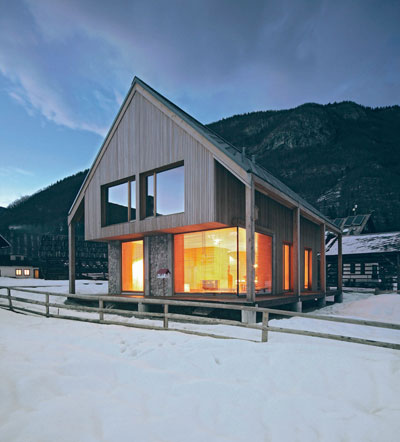
Alpine Hut, Stara Fuzina, Slovenia. OFIS Arhitekti. Photo © Tomaz Gregoric.
We already know that green living means making houses that are smaller and more energy-efficient, reusing existing structures, and incorporating repurposed materials. The new book Small ECO Houses accepts these assumptions and adds a provocative new one to the mix: prefabrication. Most of the houses in this portfolio of outstanding new designs from around the world are mobile homes, or have been assembled from standard modules that were fabricated in a workshop and then delivered to the site. Yet they’ve been conceived with such refinement that it’s difficult to believe they weren’t custom-made.
In the United States, certainly, prefabricated houses carry a strong stigma. They’re considered shoddy and impermanent, a kind of shelter that’s more appropriate for emergency relief than real living. Now designers are looking more closely at prefabrication as a way to control costs and quality by employing highly skilled craftspeople to build on a larger scale in a controlled, studio environment. And designers are bringing a broader, more sensuous palette of materials to the task. There are no white corrugated aluminum panels or flapping screen doors here. Instead, the modestly-sized structures pictured in the book are clad with wood boards, steel panels and rough brick that will weather naturally over years. And the structures are finished with a layer of details — awnings, railings copings — that add sophistication.




 Facebook
Facebook Permalink
Permalink Digg
Digg Reddit
Reddit LinkedIn
LinkedIn StumbleUpon
StumbleUpon Tumblr
Tumblr

